In order for a cucumber bed to always please you with a good harvest, you need to have a good knowledge of the technology for growing this crop.
| Content:
|
Currently, cucumbers are more often grown in open ground than in greenhouses. There are quite a lot of varieties and hybrids that are resistant to unfavorable conditions, and they are easier to care for.
Varieties for open ground
In open ground, mainly bush and weakly climbing varieties and hybrids are grown. If you plant highly climbing varieties, they need to climb somewhere.
Long-climbing and highly branching varieties require a trellis. You can plant them under a tree that they can climb, or you can plant them in a barrel so that the vines hang down. Horizontal cultivation is not suitable for such cucumbers. Their vines are intertwined into continuous thickets, inside of which it is dark, damp and there cannot be any greenery, but diseases develop very quickly.
Choosing a location, predecessors and neighbors of cucumbers
Cucumbers require rich, fertile soil. They tolerate diffused light well, but they don’t really like direct sun. The best place for them is under the trees: there is support and suitable lighting. The soil in the tree trunks must be fertilized, otherwise the crop will not reach its potential. The main thing for cucumbers is highly fertile soil, everything else can be regulated.
The best predecessors for cucumbers are early cauliflower and white cabbage.
Good predecessors:
- onion garlic;
- legumes;
- beet;
- potato;
- strawberries from the last year of fruiting.
Bad predecessors:
- cucumbers;
- other pumpkin crops
- tomatoes.
Cucumbers and tomatoes grow superbly, and their proximity is favorable for both crops. But they have one common disease - the cucumber mosaic virus, which also affects some weeds. Therefore, if there were tomatoes infected with a virus growing in the garden, then the cucumbers would definitely get sick.That is why cultures do not alternate. It is also undesirable to plant them next to each other.
Cucumbers love the proximity of onion crops. Their leaf secretions protect borage from bacteriosis. In the southern regions, corn will be an excellent neighbor; it provides much-needed shade for plants.
How to prepare the soil?
In the fall, they choose a place for a future cucumber plot. All plant residues are removed and manure is added to the soil, preferably fresh or semi-rotted. Cow and horse manure, as well as bird droppings, are suitable for the culture. Pig manure is not suitable for cucumbers.
In the fall, apply 5-6 buckets of horse or cow manure per m2, or 2-3 buckets of bird droppings. Bird droppings are the most concentrated and cannot be applied in large quantities even on very poor soils, as it can burn the soil. If there is no manure, then use compost: 5-6 buckets per m2.
The soil with the applied fertilizers is dug up onto the bayonet of a shovel.
Early in spring the soil is dug up again. Organic matter will decompose over the winter, and soil fertility will improve somewhat. If organic fertilizers were not applied in the fall, then they are applied in the spring. Peat and humus can be added with manure.
If there is no organic matter, then in the spring the soil is replenished with mineral fertilizers. Cucumber consumes nitrogen and potassium in large quantities; it requires less phosphorus. In addition, it needs microelements, especially magnesium.
At 1 m2 contribute:
- urea or ammonium sulfate 30-40 g;
- superphosphate 20-30 g;
- potassium sulfate or kalimag 40-50 g.
However, phosphorus and potassium fertilizers can be replaced with ash, and nitrogen fertilizers with plant residues. In May, weeds will already appear, which can be used instead of nitrogen fertilizers. You should always remember that for cucumbers at least some organic matter is better than a lot of mineral fertilizers.
When growing cucumbers, the soil should have a neutral or slightly acidic reaction (pH 5.5-6.5), although the plant also tolerates a shift to the alkaline side (up to pH 7.8). If the soil is very acidic, then add fluff in the spring. It quickly deoxidizes the soil, the application rate is 20-30 kg/sq.m. Lime can be replaced with ash - 1 cup/m2.
After applying mineral fertilizers and, if necessary, fluff, they are embedded on the bayonet of a shovel.
The dug up plot is covered with black film so that the earth warms up faster. When the weeds sprout, the bed is weeded.
A cucumber, even in open ground, when it seems warm outside, requires soil heated to at least 18°C. It is better to add compost to the garden bed, since it generates less heat than manure, otherwise the plants will burn in the hot summer. Early sowing of cucumbers in the ground is not carried out, and intensive heating of the soil is not required. Too warm and wet soil (and under cucumbers it should always be wet) provokes root rot.
Methods for growing cucumbers
You can grow crops in open ground not only on horizontal beds. Very convenient to plant cucumbers in barrels without a bottom, or by making an inclined bed like a slide.
- Vertical beds. Cucumbers are grown in plastic barrels without a bottom or cylinders rolled from roofing felt or plastic, large flowerpots. Fill the container from below with branches, sawdust, straw, and hay. All this is covered with a 20-30 cm layer of earth. Then there is a layer of last year’s leaves, compost or manure, which is also covered with earth, not reaching the upper edge of the container 20-25 cm. The earth is very well poured with hot water. Then the cylinder is covered with black film and left to warm up for 15-30 days. This method of growing significantly saves space on the site.
- Sloping ridges. The method is more labor-intensive.An inclined bed is made 80-100 cm high along the high edge, which gradually decreases to 20 cm, 1.8-2 m wide, of arbitrary length. To prevent the edges from crumbling, they are reinforced with boards. Like a vertical container, the bed is filled in layers. Chopped branches, straw, and fallen leaves are placed at the very bottom. 15 cm of soil is poured on top of them, then compost is added and covered with fertile soil. Covering material is attached to the top wall of the box. It is advisable that the garden bed be shaded for at least 6-7 hours a day.
When grown in this way, the vines will hang down and will not thicken the plot. It is easier to care for cucumbers in such beds.
Seed preparation
Varietal self-pollinating cucumbers are heated for 20-30 minutes in a thermos in hot water (53-55°C). You can add potassium permanganate to a thermos to create a slightly pink solution to disinfect seeds.
The hybrids are kept in a pink solution of potassium permanganate for 15-20 minutes. Even if the bag says that the seeds have been treated, they are still disinfected, since the protective effect of the fungicide is limited and ends by the time of planting. In addition, when grown on manure, cucumbers are more susceptible to root rot.
When planting cucumbers in open ground, the seeds are usually not germinated. They can be soaked for several hours to initiate the growth process and sown immediately.
Dry seeds can only be sown in heated soil that has been soaked to 20-25 cm. But treated seeds germinate better.
Sowing rules
- Seeds of self-pollinating varieties have the highest germination rate in 2-3 years. Such plants have fewer empty flowers and significantly more female flowers than plants grown from fresh seeds. The yield of hybrids does not depend on the shelf life of the seed.
- Seeds are sown only in warm soil.They will die in the cold ground.
- Hybrids and varieties cannot be planted together on the same plot. Otherwise, as a result of cross-pollination, the ovaries will be ugly.
- Shading. It is not advisable to plant cucumbers in areas where there is direct sunlight throughout the day. Cucumbers are more suited to diffused light.
Sowing
Planting of cucumbers in open ground is carried out in the middle zone from May 25, in the southern regions - at the beginning and middle of the month, in the North-West - at the beginning of June. On warm beds seeds are sown 7-10 days earlier. The specific dates are determined by the weather. The most important thing for a cucumber is warm soil.
In the middle of the bed, a furrow 2-3 cm deep is made along it, it is spilled well with warm, settled water and the cucumbers are sown at a distance of 30-40 cm from each other. The seeds are planted to a depth of 2 cm. There is no need to water the bed after this, otherwise the seeds will be pulled deep into the soil and they will not germinate.
Can be planted using the nesting method. A hole is made in the middle of the bed, into which 3-4 seeds are sown at a distance of 10 cm from each other, the distance between nests is 50-60 cm.
Condensed planting, as in a greenhouse, is not carried out, since the cucumbers will branch (in closed ground the plants grow into one stem), and when the plantings are thickened, the yield decreases sharply, since the feeding area is significantly reduced.
In vertical containers, 10-12 cm are removed from the edge and cucumbers are planted at a distance of 15 cm from each other. If the crop is grown in a barrel, then only 3-4 seeds are sown in such a bed.
Cucumbers are planted in 2 rows in a sloping bed. The first row is made from above, the second - in the middle of the bed. The grooves are drawn across, the distance between the seeds is 12-15 cm, between the grooves 80-100 cm. If the bed is not long, then it is better to make one longitudinal groove in the center of the bed.
After sowing, any bed must be covered with covering material. If the temperature is minus at night, then the material should be laid in 2-3 layers.
To get greens all summer, planting cucumbers is carried out in several stages with an interval of 2 weeks. Then, if the weather is favorable, cucumbers can be harvested in September, and in the southern regions - in October.
Seedling growing method
Growing cucumbers through seedlings widely used in the middle zone and further north. But now, when there are early varieties resistant to adverse factors, this method is being abandoned. He doesn't justify himself:
- firstly, it is difficult for seedlings to take root after planting in the ground. Losses often amount to more than half of the plants;
- secondly, seedlings lag behind ground plants in growth and development;
- thirdly, although they begin to bear fruit earlier, their yield is ultimately 2 times less than that of cucumbers grown by direct sowing in the ground.
Nowadays, the seedling method of growing cucumbers is practically not used. It is safer and more economical to plant cucumbers directly in the ground.
If the seedlings still grew on the windowsill, then they are planted in the garden bed at the age of 15-20 days. Seedlings are planted only by transferring: the soil in the pot is well moistened and the plant is carefully removed along with the lump of earth. Plant in the prepared hole and water.
The best option for planting seedlings is to grow them in peat pots and plant them in the ground along with the pot. The survival rate of such seedlings is an order of magnitude higher.
Care during the initial growth period
As soon as the shoots appear, the film is removed from the beds. If the weather is cold, then a greenhouse 20-30 cm high is installed above the seedlings, covering it with lutarsil or film. Lutarsil is preferable because it allows air to pass through.As the cucumbers grow in cold weather, the height of the greenhouse is increased to 60-70 cm. During the day, the covering material is removed if the outside temperature is 18°C.
On cold nights, the beds are covered, but as soon as night temperatures rise above 16°C, the covering material is completely removed from the beds. If the plants are grown in a manure bed, then they can be left open even at a night temperature of 14°C.
In the north or during cold summers in the middle zone, you will have to grow cucumbers under cover all summer.
After planting a crop in a garden bed, it cannot be weeded. When weeds appear in the initial period of growth, they are cut off at the root with scissors. In the future, when the cucumbers grow, they themselves will choke out any weeds.
At caring for cucumbers Do not loosen the soil, otherwise the roots may be damaged. If the soil on the site quickly compacts, then the soil is mulched with peat, old sawdust (you can’t use fresh sawdust, since they contain resinous substances and strongly absorb nitrogen from the soil, which is detrimental to cucumbers), pine litter, and manure crumbs.
When growing cucumbers without mulch, to ensure sufficient air supply to the roots, pierce the ground with a pitchfork at a distance of 5-7 cm from the plant to the depth of the tines in several places. This technique is used on heavy, quickly compacting soils. Then the cucumbers will not experience a lack of oxygen.
Phases of cucumber development
When growing cucumbers, the following development phases are distinguished.
- Shoots. At a temperature of 25-30°C, seedlings appear on days 3-5. At a temperature of 20-25°C - after 5-8 days. If the temperature is 17-20°C, then the cucumbers will germinate only after 10-12 days. At temperatures below 17°C, the crop will not germinate. Cucumbers are planted only in warm soil; in cold soil the seeds die.
- First leaf phase occurs 6-8 days after germination.If it is too cold outside, it may take longer for the first leaf to appear.
- Intensive growth. Cucumbers grow green mass and branch intensively.
- Bloom begins in early varieties after 25-30 days, in late varieties, 45 days after germination. Each cucumber flower lives on average 4-5 days. In parthenocarpics, almost every flower forms a fruit. In bee-pollinated and self-pollinated varieties, if pollination has not occurred during these days, the flower falls off. In addition, bee-pollinated varieties have a lot of barren flowers (male flowers), which also fall off after 5 days.
- Fruiting occurs in early varieties after 30-40 days, in mid-season varieties after 45 days, in late varieties - 50 days after germination.
- Reduced productivity and wilting lashes In early varieties it occurs 30-35 days after the start of fruiting, in later varieties after 40-50 days.
Forming cucumbers
Proper formation of cucumbers plays an important role in increasing productivity. When caring for cucumbers grown horizontally, side shoots are not removed. All fruiting goes to them. If they are cut off, the plant will grow lashes again and again, losing strength and time. On the main stem of cucumbers, especially those grown horizontally, there are practically no flowers; they begin to appear only on vines of the 2nd order, and the most abundant fruiting occurs on vines of 3-5 orders.
If the crop is grown in a vertical bed, then shoots from the axils of 1-2 leaves are plucked from the plants. They are the most powerful and will slow down the growth and branching of the remaining vines. The lashes are allowed to hang down calmly, pinching their ends after 6-7 leaves so that there is no strong thickening. Weakly branched varieties are grown without pinching.
In bush cucumbers, the vines are not pinched.Their side shoots are greatly shortened or do not form at all. The main crop is formed on the main stem. The yield of bush cucumbers is lower than that of climbing cucumbers, but they bear fruit early and consistently.
Shading cucumbers
This is a must when caring for plants. Without shading in direct sun, plant leaves become prickly, hard and rough, and break easily; the ovaries turn yellow and dry out. And the yield in direct sun is lower.
Therefore, it is ideal to plant the crop under trees or in places where there is shade during the day (along the house, greenhouse, near the fence). If cucumbers grow in a garden bed, then put up arches and throw over a green mosquito net, which provides shade and, at the same time, lets in enough light.
Watering and fertilizing
Water the cucumbers at least 3 times a week. On hot days, watering is carried out daily. Use only warm, settled water. When watered with cold water, cucumbers may stop developing, and during the fruiting period, they may lose their ovaries. In cold weather, cucumbers are watered very sparingly.
Watering is best done in the first half of the day. The ovaries grow at night and the cucumbers must be saturated with water during the day. In addition, in the morning, leaves evaporate moisture most intensively and during the day they often experience a lack of it.
Feeding is carried out once every 7-10 days. When caring for cucumbers, they are mandatory, and if you miss even one of them, this will immediately affect the yield.
During the season, at least 6-10 feedings are carried out, depending on the duration of fruiting of the variety.
Plants require a lot of nitrogen, potassium and trace elements, especially magnesium, for normal fruiting. There is less need for phosphorus. During the season you need to make at least 2 organic fertilizers, and the ideal option is to alternate organic and mineral fertilizers.
- First feeding carried out 10 days after germination or when the seedlings have a new leaf. 1 liter of mullein infusion is diluted in 10 liters of water and watered over the cucumbers. The infusion of bird droppings is diluted 0.5 liters per 10 liters of water. As a last resort, take 2 tbsp. potassium humate per 10 liters of water.
- Second feeding carried out after 7-10 days. Take either potassium humate, or a solution of organic fertilizer Effecton O, or Intermag vegetable garden. If this is not the case, then 1 tablespoon of urea and 1 teaspoon of potassium sulfate are diluted in 10 liters of water and fertilized. Potassium sulfate can be replaced with a glass of ash infusion. When caring for cucumbers, dry ash is not added, since the plants are not loosened, the nutrients take too long to reach the roots, which inhibits the development and fruiting of the crop.
- Third feeding it is advisable to carry out weed infusion with the addition of ash or any microfertilizer.
- Fourth feeding: azofoska and potassium sulfate or kalimag.
- They spend 1-2 per season foliar feeding. The best time is the beginning of fruiting. Microfertilizers or potassium humate are used for them. The second spraying is done 10 days after the first. Foliar spraying is a full-fledged top dressing, so additional fertilizers are not added to the root.
3 weeks after the start of fruiting in early varieties and after 30-35 days in later varieties, a decline begins; by this time the canes are already exhausted, which affects the yield and quality of the greens.
With further care to maintain productivity, the interval between fertilizing is reduced to 6-7 days. Only organic matter is used as fertilizing (manure, weed infusion, as a last resort, factory-made liquid organic fertilizers). Mineral nutrition is not suitable for caring for dying cucumbers.Ash or calimag must be added to organic matter.
For hybrids, fertilizing rates are 3-5 times higher. They are fed more and more often. If hybrids are fed the same way as varietal cucumbers, then you may not expect a harvest.
Growing cucumbers on a trellis
Cucumbers are climbing plants, so when grown in open ground, if there is no natural support, they make a trellis. On the trellis, the plants are ventilated; there are no dense thickets that usually form when grown on a floor. Plants are less affected by diseases, and they are easier to care for.
Usually, stores buy ready-made structures, which can be either wooden or metal in the form of a tent, cabinet, or rectangle. You can make the support yourself. If cucumbers are grown in a sunny place, then the structure is made with a canopy to shade the plants.
To grow cucumbers on a trellis, plant them in one row, making a furrow in the middle of the bed. The trellis is placed either along the row or on both sides along the bed, depending on the design. When the plants have 3-4 true leaves, they are tied to the top strip of the trellis.
All shoots, buds and flowers from the axils of the first 4-5 leaves are removed. After this, the plants are allowed to form vines, which are sent along the horizontal slats of the trellis.
Further care involves adjusting the length of the side braids. Each plant should have 4-5 formed side shoots that become blind after 5-6 leaves. The main harvest of greens is formed on them. At the beginning of fruiting, the cucumber trellis is a thick green wall.
Care, watering and fertilizing of cucumbers on a trellis are the same as for horizontal cultivation.
How to increase the yield of cucumbers
- Hybrids are more productive than varieties.With them, every flower has the potential to become greenery.
- The more fertile the soil, the higher the yield. In the fall, organic matter must be added to the future borage.
- Regular fertilizing significantly increases the harvest of greens. If they are delayed, the yield drops.
- Proper and timely care (watering, shading, aeration) increases the quantity and quality of greens.
- The main crop in open ground is formed on vines of 2-4 orders, so cucumbers are allowed to curl freely.
- Removing the first ovary on the vine helps to increase yield.
- Growing on a trellis makes it easier to care for and increases productivity.
- After 2-4 weeks of fruiting, the vines weaken and for intensive fruit set in the feeding, the dose of nitrogen is increased by 1.5 times and potassium by 2 times.
- Greens are collected every 2-3 days. This stimulates the appearance of new flowers and fruits.
How to get your own seeds?
Seeds can only be obtained from bee-pollinated varieties. Parthenocarpics do not set seeds, and in self-pollinating hybrids, in the future there is a strong splitting of characteristics for the worse, so that it will not be possible to grow full-fledged cucumbers.
So, a bee-pollinated variety. This must be a mono landing. At a distance of 300-400 m there should be no planting of any other cucumbers, either varieties or hybrids. Only then can you be sure of the quality of the collected seeds.
1-2 greens are left on the vine at the height of fruiting. Only 4-sided greens are left, from the seeds of which plants grow that produce many female flowers.
A barren flower is formed from 3-sided cucumbers.
The plant devotes all its strength to only one single seed cucumber; ovaries cease to form on the vine. The seed fruit should be completely ripe, yellow and soft.When its stalk dries out, it is cut off. You can wait for the moment when he himself falls to the ground.
The fruits are left on the windowsill for several days. During this time, they will soften and fermentation processes will begin. Then the back part of the cucumber is cut off (where the stalk was). Seeds are not taken from it, since they do not ripen there. The fruit is cut in half, from the spout (where there once was a flower), the seeds are released, and washed. The floating seeds are removed, the rest are placed to dry on the windowsill.
There are recommendations on the Internet that the seeds are first released and then fermented to better separate the pulp. It is not right. The process of separating seeds from pulp (fermentation) begins in the fruit itself. At this time, the fruit gives everything it can to the seeds. If the seeds are immediately released and then further fermented, they will not fully receive all the substances they should receive.
Dry seed material is placed in paper or fabric bags and stored at a temperature of 15-18°C.
Freshly harvested seeds cannot be planted, as they produce only one barren flower. The best time for planting is 3-4 years after collection.
You might be interested in:
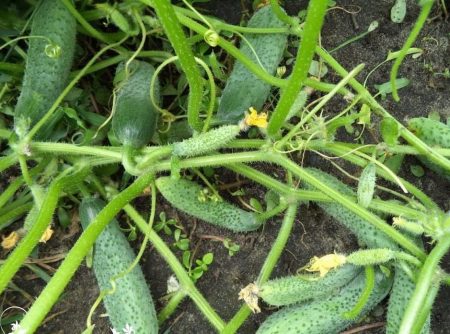
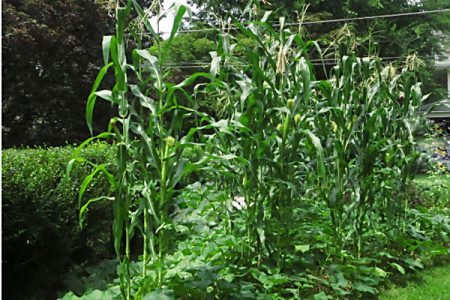
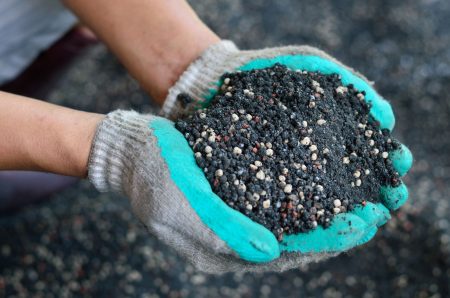
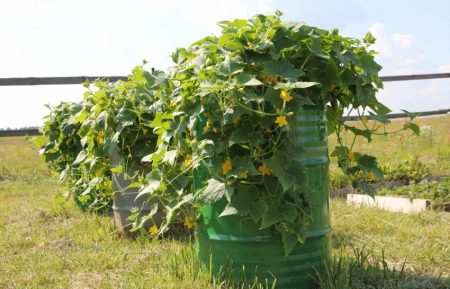
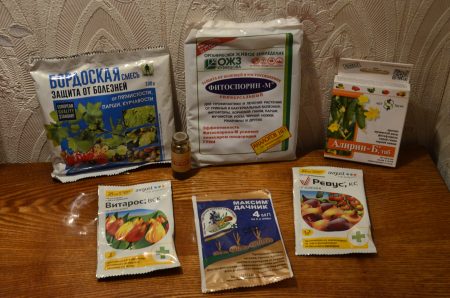


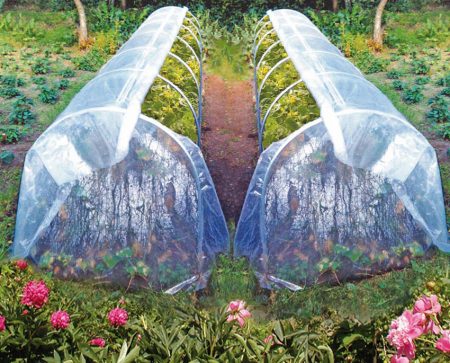
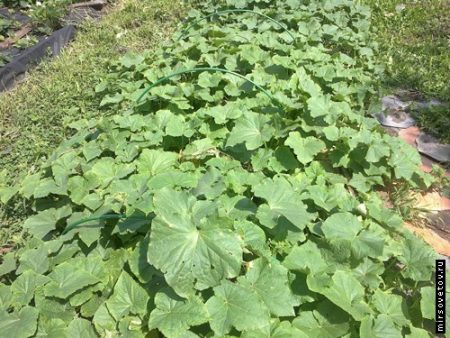
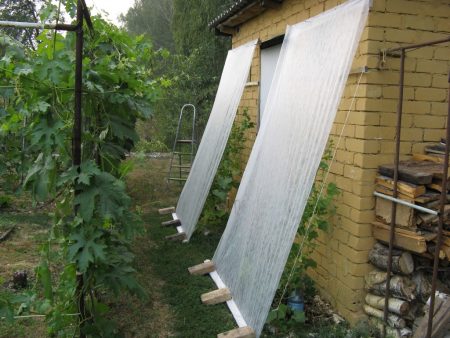
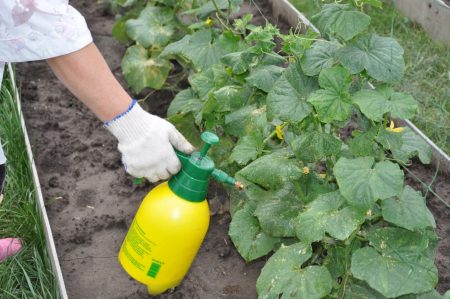
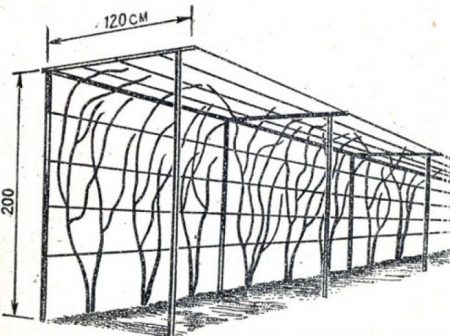
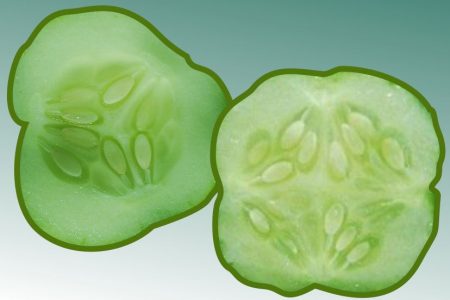
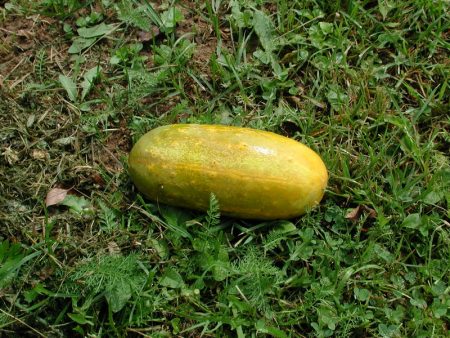

 (16 ratings, average: 4,81 out of 5)
(16 ratings, average: 4,81 out of 5) CUCUMBERS NEVER GET SICK, I'VE BEEN USING ONLY THIS FOR 40 YEARS! I SHARE A SECRET WITH YOU, CUCUMBERS ARE LIKE THE PICTURE!
CUCUMBERS NEVER GET SICK, I'VE BEEN USING ONLY THIS FOR 40 YEARS! I SHARE A SECRET WITH YOU, CUCUMBERS ARE LIKE THE PICTURE! You can dig a bucket of potatoes from each bush. Do you think these are fairy tales? Watch the video
You can dig a bucket of potatoes from each bush. Do you think these are fairy tales? Watch the video
 How our fellow gardeners work in Korea. There is a lot to learn and just fun to watch.
How our fellow gardeners work in Korea. There is a lot to learn and just fun to watch. Eye trainer. The author claims that with daily viewing, vision is restored. They don't charge money for views.
Eye trainer. The author claims that with daily viewing, vision is restored. They don't charge money for views. A 3-ingredient cake recipe in 30 minutes is better than Napoleon. Simple and very tasty.
A 3-ingredient cake recipe in 30 minutes is better than Napoleon. Simple and very tasty. Therapeutic exercises for cervical osteochondrosis. A complete set of exercises.
Therapeutic exercises for cervical osteochondrosis. A complete set of exercises. Which indoor plants match your zodiac sign?
Which indoor plants match your zodiac sign? What about them? Excursion to German dachas.
What about them? Excursion to German dachas.
The “author” of the article has any idea what a square meter of area is? What does 5-6 buckets of manure look like on it? or 3 buckets of chicken manure? What concentration of nitrates is obtained in the ground if you follow this recommendation from the article?
Don’t be lazy, measure an area of 1 m by 1 m on the ground and pile a bunch of 5 buckets of manure on this square and just enjoy the spectacle.